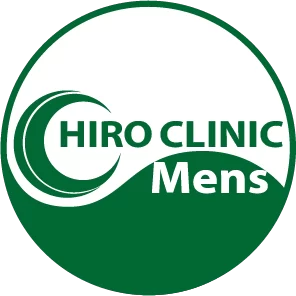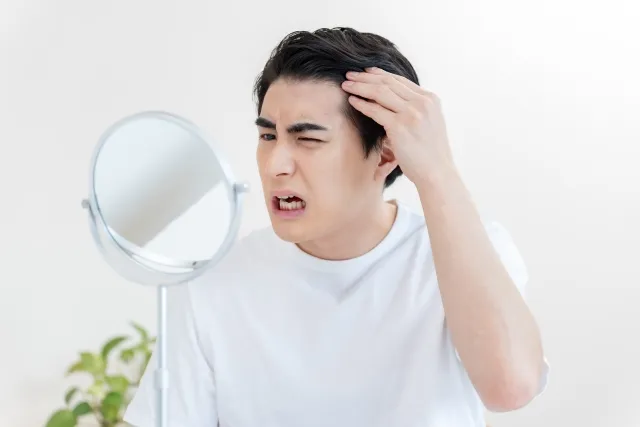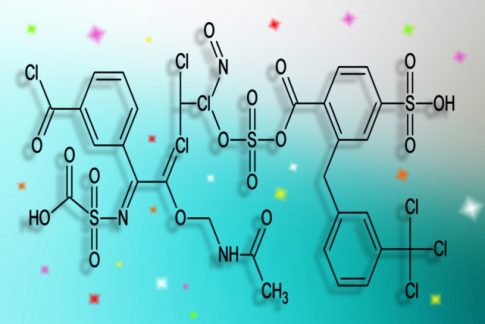There are minoxidil lotions on the market, but they actually work for only 40% of people.You may think they are all effective, but those with low activity of sulfotransferase, which converts minoxidil, are less effective.
Therefore, it is first necessary to measure whether this enzyme is present in the person being treated.[…]
That is the Mino Scarp Check.
It can be measured by directly measuring the enzyme present in hair follicles.
The Tokyo Hygienic Laboratory is the only laboratory in Japan that can perform this measurement.
So how effective is minoxidil for how many people?The following paper shows the frequency in India. It states that Minoxidil was effective in only 24% to 52% of the population.
Because Indian and Japanese people are genetically different, the Tokyo Sanitation Laboratory has conducted similar tests and found that only about 40% of people express this enzyme, and 60% of people are ineffective with minoxidil.
It is important to test the expression of the phototransferase enzyme that you do before using over-the-counter topical minoxidil products such as Re0p.It is a waste of money to use it if it is not effective.
Comparative Clinical Study Evaluating the Efficacy and Safety of Topical 5% Cetosomal Minoxidil and Topical 5% Alcohol-Based Minoxidil Solutions for the Treatment of Androgenetic Alopecia in Indian Men
Monitoring Editor: Alexander Muacevic and John R Adler
Sandeep Sattur,1,2 Abhay Talathi,3 Geetanjali Shetty,4 Shehnaz Arsiwala,5 Rickson Pereira,6,7 and Dhiraj Dhoot8
Author information Article notes Copyright and License information PMC Disclaimer
Abstract
Introduction
Patients with androgenetic alopecia (AGA), who use alcohol-based topical minoxidil solutions, frequently experience localized irritation, dryness, and scalp redness. In this study, we compared the safety and effectiveness of topical 5% cetosomal minoxidil solution to those of topical 5% alcohol-based minoxidil solution in Indian men with AGA.
Methods
In this randomized, open-label study, male patients with AGA were randomized 1:1 to receive either solutions twice daily for 16 weeks. Efficacy endpoints included changes in basic and specific (BASP) grading, improvement in the trichoscopy score, and global photography at week 16 from baseline, whereas safety was evaluated by adverse events reported by patients and hair-related quality of life (QoL) using the Hairdex-29 questionnaire.
Results
Of the 80 patients, only 40 completed the study and were considered for complete analysis. Twelve out of 23 patients (52%) in the cetosomal minoxidil group and four out of 17 patients (24%) in the alcohol-based minoxidil group showed a positive increase in hair growth according to the trichoscopy score (p=0.1). According to the BASP grading system, nine patients (39%) and five patients (29%) in the cetosomal and alcohol-based minoxidil groups, respectively, showed improvement (p=0.73). Similarly, 19 (83%) and 10 (59%) patients in the cetosomal and alcohol-based minoxidil groups, respectively, reported positive hair growth on the global photography assessment (p=0.15). All the patients tolerated the treatment well, with no discontinuation in either group. There were four adverse events in the cetosomal minoxidil group, reported by two (9%) patients, whereas in the alcohol-based minoxidil group, 10 adverse events were reported by seven (41%) patients (p=0.02). In addition, the mean Hairdex-29 score of 40.26±4.71 at baseline improved to 32.32±3.35 in the cetosomal group, whereas it improved to 34.64±3.41 from 39.64±4.98 in the other group (p=0.03).
Conclusions
The 5% cetosomal minoxidil group showed improved safety but similar efficacy when administered twice daily. Therefore, cetosomal minoxidil may be a better option for treating AGA in males who are sensitive or nontolerant to alcoholic formulations.
Keywords: india, hairdex-29, safety, efficacy, conventional minoxidil, cetosomal minoxidil, androgenetic alopecia










